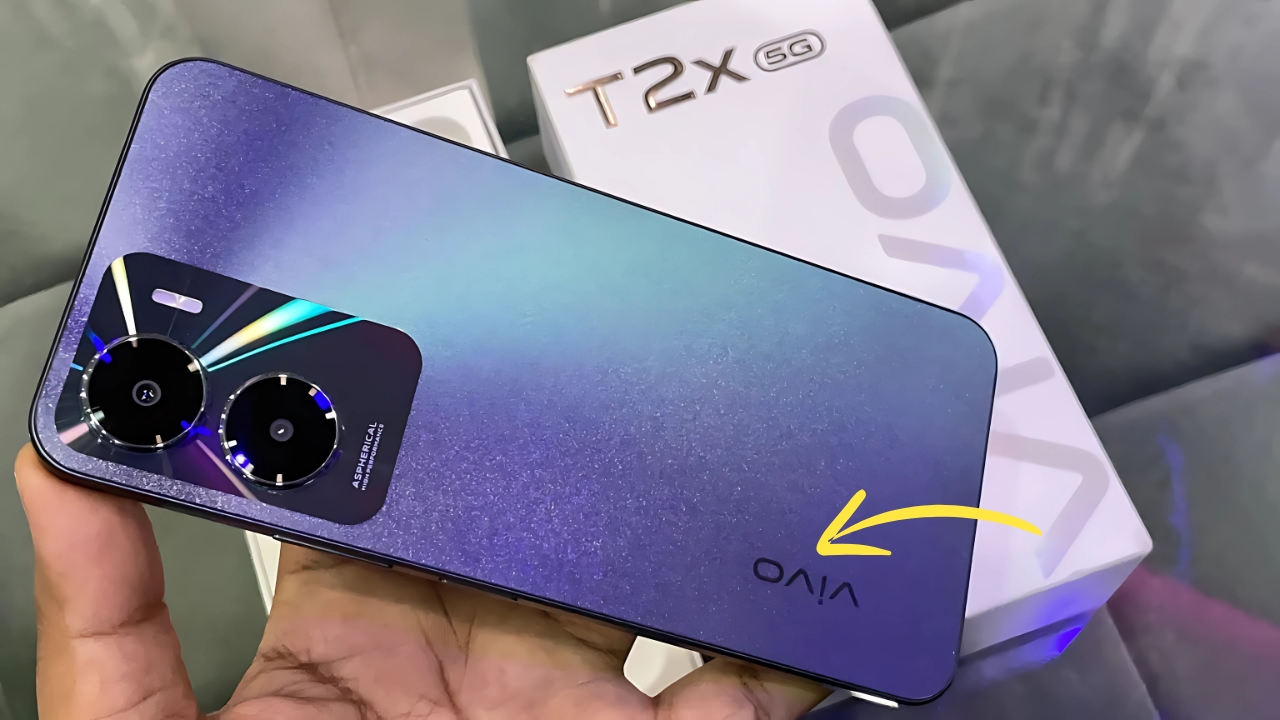Vivo T2x 5G : The democratization of smartphone technology has accelerated dramatically in recent years, with features once reserved for premium devices steadily filtering down to more accessible price points.
The Vivo T2x 5G represents a particularly interesting case study in this evolution – a budget-focused device that prioritizes performance and battery life while making calculated compromises in less essential areas.
Having used this phone as my secondary device for the past two weeks, I’ve developed nuanced impressions about where it genuinely excels and where limitations become apparent at its price point.
Vivo T2x 5G : Market Context: Understanding the T-Series Position
To properly evaluate the T2x 5G, one must first understand its positioning within Vivo’s diverse lineup. As part of the performance-oriented T-series, this device targets young consumers seeking gaming capability and battery endurance at accessible price points.
This creates a clear differentiation from Vivo’s photography-focused V-series and the more balanced Y-series, allowing more specific feature prioritization based on target audience needs.
Priced at approximately ₹12,999 ($155) for the base variant, the T2x 5G occupies the increasingly important “affordable 5G” segment where Chinese manufacturers, Samsung’s A-series, and various domestic brands fight intensely for market share.
This positioning reflects Vivo’s recognition that many first-time 5G adopters prioritize future-proof connectivity and core performance over camera sophistication or premium materials.
Design Approach: Practical Simplicity
The T2x 5G makes no pretense of premium materials, embracing a plastic construction that maintains reasonable build quality while acknowledging price constraints.
The “Marine Blue” variant I tested features a subtly textured back panel that both reduces fingerprint visibility and enhances grip compared to glossier alternatives.
This practical approach creates a device that feels durable despite its budget positioning – an important consideration for the younger demographic likely to use phones without protective cases.
At 8.45mm thick and weighing 188 grams, the device exhibits noticeable heft – partially explained by the substantial battery within.
This weight distribution feels intentional rather than haphazard, creating a solid in-hand experience that avoids the cheap feeling sometimes associated with lighter budget devices.
The side-mounted fingerprint sensor doubles as the power button, offering quick and reliable authentication without the expense of under-display technology.
The front design embraces contemporary aesthetics with a waterdrop notch housing the selfie camera – a slightly dated approach compared to punch-hole implementations but one that minimizes cost while maintaining acceptable screen-to-body ratio.
The relatively slim bezels create a modern appearance that belies the budget positioning, though the slightly more pronounced chin serves as a reminder of its price class.
Display Experience: Calculated Compromise
The 6.58-inch LCD panel represents one of the device’s more obvious compromises compared to AMOLED-equipped alternatives in slightly higher price brackets.
Yet implementation quality matters more than technology alone, and Vivo has selected a capable LCD that delivers good color reproduction, acceptable viewing angles, and better black levels than many competing IPS implementations.
The 90Hz refresh rate provides smoother scrolling and interface navigation than standard 60Hz displays, enhancing the perception of system responsiveness.
Maximum brightness reaches approximately 550 nits, sufficient for indoor visibility though challenging under direct sunlight.
The FHD+ resolution (2408 × 1080) provides appropriate sharpness for this screen size, with individual pixels remaining indistinguishable during normal use.
Color accuracy in “Standard” mode exceeds expectations for this category, while the “Vivid” setting boosts saturation without venturing into the cartoonish territory some competitors occupy.
The inclusion of Widevine L1 certification enables HD streaming across supported services – a small but meaningful detail sometimes missing from budget devices.
Performance Dynamics: Genuine Strength
Powered by MediaTek’s Dimensity 6020 processor, the T2x 5G delivers performance that represents the device’s clearest strength relative to its pricing.
This 7nm chipset provides efficient processing for everyday tasks while offering reasonable graphics capabilities for mobile gaming.
The 4GB/64GB configuration in my review unit represents the entry-level option, with 6GB/128GB configurations available for those requiring additional headroom.
In practical terms, the device handles messaging, social media browsing, video consumption, and light productivity without hesitation.
Apps launch with acceptable speed, system navigation maintains fluidity thanks to the 90Hz display, and switching between recent applications occurs without significant reloading when staying within reasonable multitasking boundaries.
Gaming capabilities exceed what the modest specifications might suggest. Titles like Mobile Legends and Call of Duty Mobile run smoothly at medium settings, while even more demanding games remain playable with appropriate graphical compromises.
This gaming performance aligns perfectly with the device’s youth-focused positioning, providing genuine value for budget-conscious gamers unwilling or unable to stretch to higher price brackets.
The inclusion of 5G connectivity provides future-proofing without significantly impacting the device’s price positioning.
During testing in areas with 5G coverage, network performance proved stable with expected speed improvements over LTE, though the real-world advantage remains moderate in most current usage scenarios.
Battery Experience: Enduring Strength
The 5000mAh battery represents another area where the T2x 5G delivers exceptional value relative to its pricing. This generous capacity consistently provides full-day endurance even under heavy usage patterns, with more conservative users potentially extending into a second day.
During my testing period, the device routinely finished days with 30-40% remaining capacity despite several hours of mixed usage including social media, video streaming, and occasional gaming.
The included 18W charging adapter represents a reasonable compromise at this price point, delivering a full charge in approximately 2 hours.
While not matching the extreme charging speeds of more expensive alternatives, this approach provides adequate convenience while potentially enhancing battery longevity through reduced thermal stress – an important consideration for a device likely to be kept for multiple years.
Camera Capabilities: Functional Adequacy
The camera system combines a 50MP primary sensor with a 2MP depth sensor – a straightforward configuration that acknowledges camera performance isn’t the device’s primary selling point.
This focused approach avoids the questionable-utility macro and low-resolution ultrawide lenses sometimes included primarily for marketing purposes.
In favorable lighting, the main camera captures reasonably detailed images with acceptable color reproduction and dynamic range.
The camera app includes several computational photography features like portrait mode and night mode that produce usable results despite hardware limitations.
Video capabilities extend to 1080p at 30fps with acceptable stabilization for casual documentation.
The 8MP front-facing camera delivers serviceable selfies in good lighting conditions, though struggles in more challenging environments.
These imaging limitations represent perhaps the clearest compromise compared to slightly more expensive alternatives, aligning with the device’s performance-focused positioning rather than attempting to excel across all possible metrics.
Vivo T2x 5G : Focused Value
The Vivo T2x 5G ultimately succeeds through clear understanding of its target audience and judicious feature prioritization.
Rather than attempting to deliver balanced mediocrity across all specifications, it provides exceptional performance in areas most valued by its young, budget-conscious demographic – processing capability, gaming experience, battery endurance, and future-proof connectivity – while making calculated compromises in camera sophistication and materials.
For consumers seeking substantive performance advantages rather than specification-sheet completeness, the T2x 5G offers a compelling proposition that focuses on practical advantages rather than marketing checkboxes.
In embracing this focused approach rather than attempting universal appeal, Vivo has created a device that serves its intended purpose with impressive effectiveness at a price point accessible to many first-time 5G adopters.









